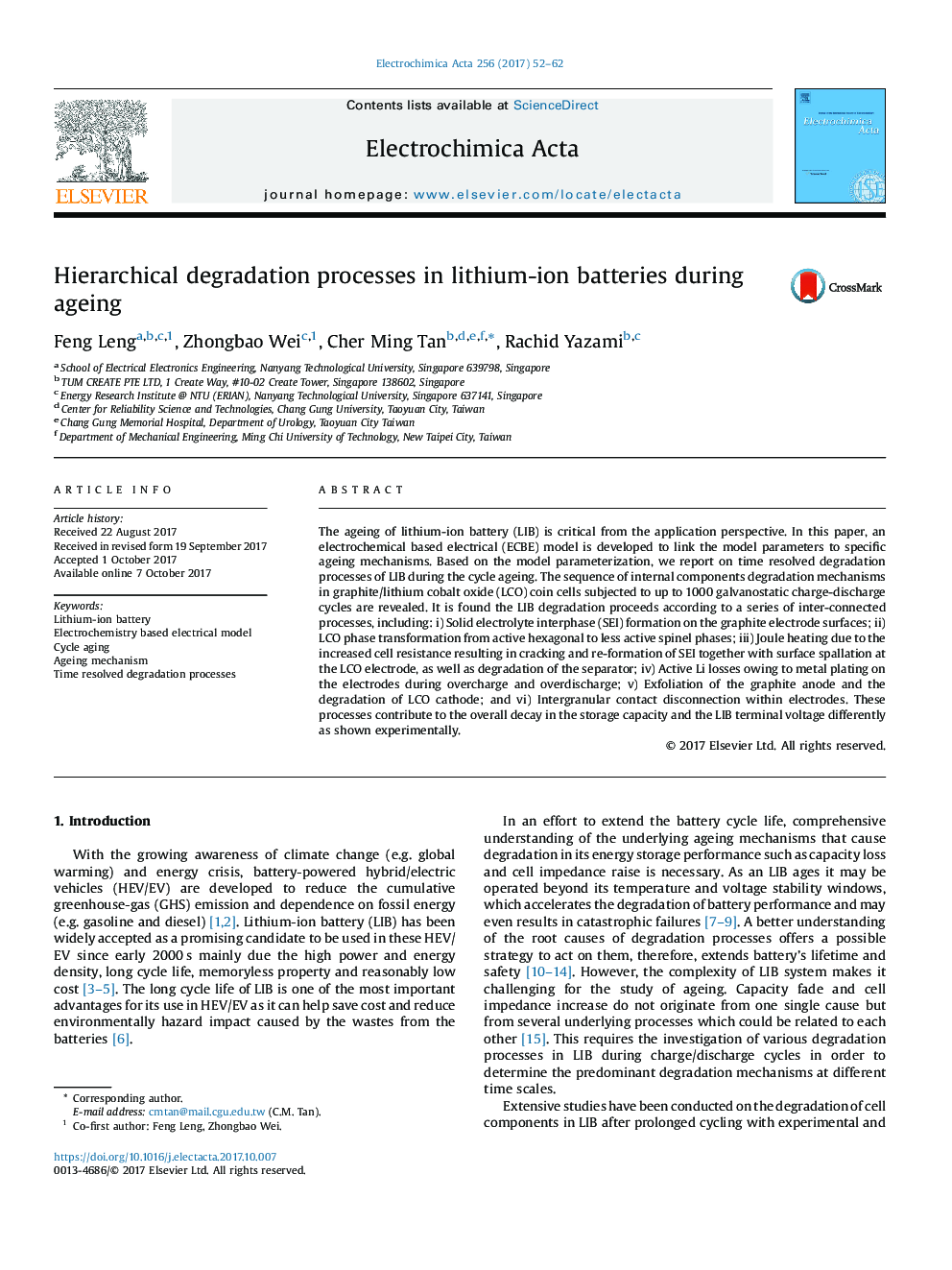| Article ID | Journal | Published Year | Pages | File Type |
|---|---|---|---|---|
| 4766610 | Electrochimica Acta | 2017 | 11 Pages |
Abstract
The ageing of lithium-ion battery (LIB) is critical from the application perspective. In this paper, an electrochemical based electrical (ECBE) model is developed to link the model parameters to specific ageing mechanisms. Based on the model parameterization, we report on time resolved degradation processes of LIB during the cycle ageing. The sequence of internal components degradation mechanisms in graphite/lithium cobalt oxide (LCO) coin cells subjected to up to 1000 galvanostatic charge-discharge cycles are revealed. It is found the LIB degradation proceeds according to a series of inter-connected processes, including: i) Solid electrolyte interphase (SEI) formation on the graphite electrode surfaces; ii) LCO phase transformation from active hexagonal to less active spinel phases; iii) Joule heating due to the increased cell resistance resulting in cracking and re-formation of SEI together with surface spallation at the LCO electrode, as well as degradation of the separator; iv) Active Li losses owing to metal plating on the electrodes during overcharge and overdischarge; v) Exfoliation of the graphite anode and the degradation of LCO cathode; and vi) Intergranular contact disconnection within electrodes. These processes contribute to the overall decay in the storage capacity and the LIB terminal voltage differently as shown experimentally.
Related Topics
Physical Sciences and Engineering
Chemical Engineering
Chemical Engineering (General)
Authors
Feng Leng, Zhongbao Wei, Cher Ming Tan, Rachid Yazami,
